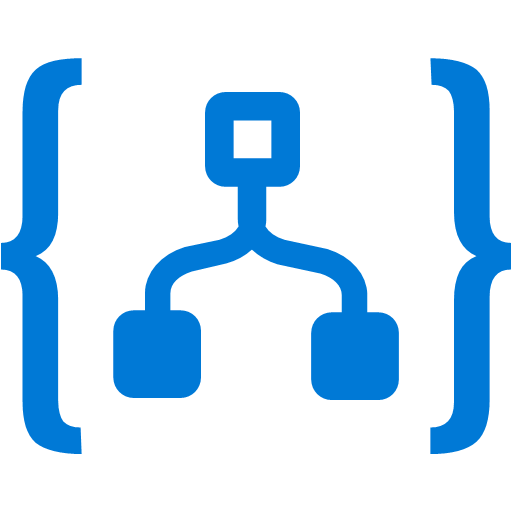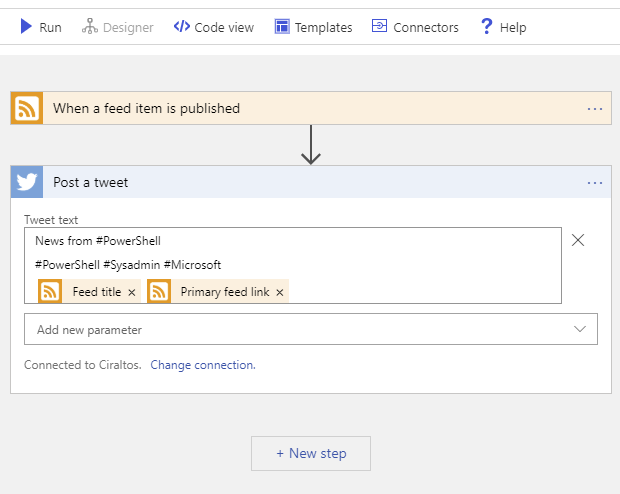

Microsoft Flow in Office 365 and Logic Apps in Azure are both options for graphically driven process automation. With a graphical interface and a flowchart-like design, Microsoft Flow and Logic Apps make automation about as simple as it can get. These two applications are similar but different in some important ways. This article goes over the difference between the two to help understand the best situation to deploy each.
Flow is Logic Apps
It is easy to see the similarities between Flow and Logic Apps by examining the interface of the two. Below shows the same flow that sends a tweet when items are updated in the PowerShell blog RSS feed.


The similarities are apparent, and there is a good reason for that. Logic Apps is the engine behind Flow. Essentially, Flow is a user-based interface for Logic Apps. Both Flow and Logic Apps provide the ability to create automations using a similar interface and an almost identical set of connectors.
Why Two?
At this point you may be asking yourself “self, why did Microsoft make two versions of the same product?” The answer to that is simple when examining the context in which they are used. The example above sends a tweet every time an RSS feed is updated. An organization would probably not consider that as mission critical. If a user creates the flow above, leaves the organization and the O365 licensed is removed, the Flow will stop working. No big deal.
However, the natural progression is to use Flow beyond trivial tasks once users start working with it and see the potential. Need to send a message when a new email comes to the Customer Service inbox? No problem. How about building an approval process when a new item is added to a SharePoint List? There is a flow for that. With hundreds of connectors in Flow, the possibilities for automation are endless.
Now, imagine an important automation was built in Flow and the person who built it left the organization. That Flow would stop working and disrupt business processes. This illustrates the main difference between Flow and Logic Apps. Microsoft Flows security context and license is based on a user. Logic Apps, on the other hand, is an enterprise solution built in Azure and charged by a consumption-based model.
Logic Apps provides centralized management and monitoring of automation. Development can be done by a single person or a team. Management is handled by administrators and Role Based Access Control (RBAC) is used to assign permission to Logic Apps.
How are they Different?
From a functionality standpoint, there is not much difference between Flow and Logic Apps. There are some other important distinctions between the two. Listed below is a summary of the major differences.
- Flow is part of an O365 or Flow license. Some features and the number of automations that run a month are limited to the license assigned to the user who created them. Logic Apps is part of an Azure Subscription and billed on a consumption model.
- Flow has a mix of standard and premium connectors. Premium connector availability is dependent on the licensing level. Logic Apps have Standard and Enterprise connectors. Both Standard and Enterprise are available in Logic Apps, but billed at a different rate per execution.
- There are more development options with Logic Apps compared to Flow. Flow is limited to a browser-based experience while Logic Apps can be created in a web browser as well as in Visual Studio.
Summary
Both Microsoft Flow and Logic Apps are wonderful tools for graphical based automation. Like any tool, there is a correct and incorrect way to use each. Flow is the best option for personal automation while Enterprise workflows are more suited for Logic Apps. The challenge is to prevent Flow from sprawling into enterprise workflows. An awareness of the difference between the two is a good start.



